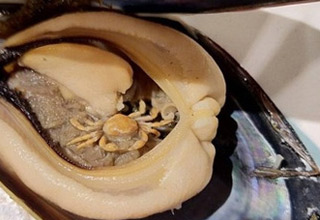Of Pachinko Parlours and Bag Ladies...
Before I move house and (temporarily) lose my Internet connection, I thought I would write about a few things raised in the comments of my last blog. If there's other stuff about life in Tokyo that you want to know about, leave a comment and I'll try to write about it.
For those who don't know, pachinko is a Japanese game designed to tap into the desire to gamble but avoiding the nasty business of actually giving the winners any money. Gambling (apart from the state lottery and on-course betting on horse racing and (weirdly) bicycle racing) is illegal in Japan, so the ingenious Japanese have come up with a substitute. In the 14th Century the Italian poet described Hell as 9 circles of horrors in his poem 'Inferno', but had he visited a pachinko parlour he would have undoubtedly added a 10th. The first thing you notice is the noise - imagine an enclosed space where thousands of steel ball bearings are being dropped onto metal sheets (this is actually what happens, not a metaphor, as you can see when I describe the 'game below). Add to this flashing lights and sound effects/ sirens loud enough to be heard over the base cacophony and you have a good idea of the atmosphere of the pachinko parlour. The lost souls playing the game, enticed in by pretty young women standing outside the door, stare at the machines, their faces the image of vacant concentration.
The game itself is rather like the childrens game bagatelle (those simple wooden pinball games where a steel ballbearing is shot up onto a sloping board which is covered with metal pins arranged st that they can catch the ball on its way to the bottom). The player purchases a basket of steel ballbearings, and feeds them into the pachinko machine, manipulating a couple of handles to guide them into high scoring 'holes'. If the player is good at it, he can win... more steel ballbearings to put into the machine. Rather than cash erattling into the tray at the bottom of the machine, more ballbearings drop out. Eventually these ball bearings can be exchanged for small value prizes (a few cartons of cigarettes, cuddly toy for the girlfriend, that sort of thing). A brilliant idea, all the thrill of losing your money with none of the risk of winning anything worthwhile - Dante would have been proud of such a Hell. I am told that there is often a member of the local Yakuza with a stall near to the Pachinko hall, who will pay cash (at a massive discount) for the bearings, but I've never seen it for myself.
Someone asked what the homeless look like in Japan. Well there are the quintissential 'bag ladies' (and men) who look the same as those in London, Paris or New York, dressed in filthy old clothes that have faded to a uniform olive/ brown colour, faces half hidden by hoods/ headscarves/ beards who wander around carrying the usual assortment of plastic bags containing... somthing bulky but obviously not to heavy. They mutter in what appears to me to be a universal 'bag lady' language because it sounds exactly the same in Tokyo as it does in London.
Then there are the younger people who have been made homeless by the downturn. Young people in Japan often have accomodation provided by their employers (cheap apartments, even company dormatories where employees get a bunk and a communal living space), and when the job goes so does the living space. One way around this seems to be to 'live' in an Internet cafe - seeing the market some cafes offer a daily or even weekly rate, a private cubicle with internet connection and futon (matress on the floor) and shower/ toilet facilities.
Someone described Tokyo as 'scummy but in a nice way'. It is a fairly old city, established in the beginning of the 17th century after the Japanese civil war had been won by the Tokugawa clan. it was called Edo, and was made the base of the Tokugawa government. Much of the layout remains similar, with narrow streets and very few apparent planning restictions. The population has become huge however (some 25 million crammed into the city), and so often the narrow streets are piled high with clubs, restaurants, bars etc, 6 to 8 stories above street level (not single multi-story bars, but bars/ clubs on the first to eighth story). Some parts are shiny and modern, but there is much with a much more downtown feel to it.
I'll write some more once we move. Thanks for reading :)






6 Comments